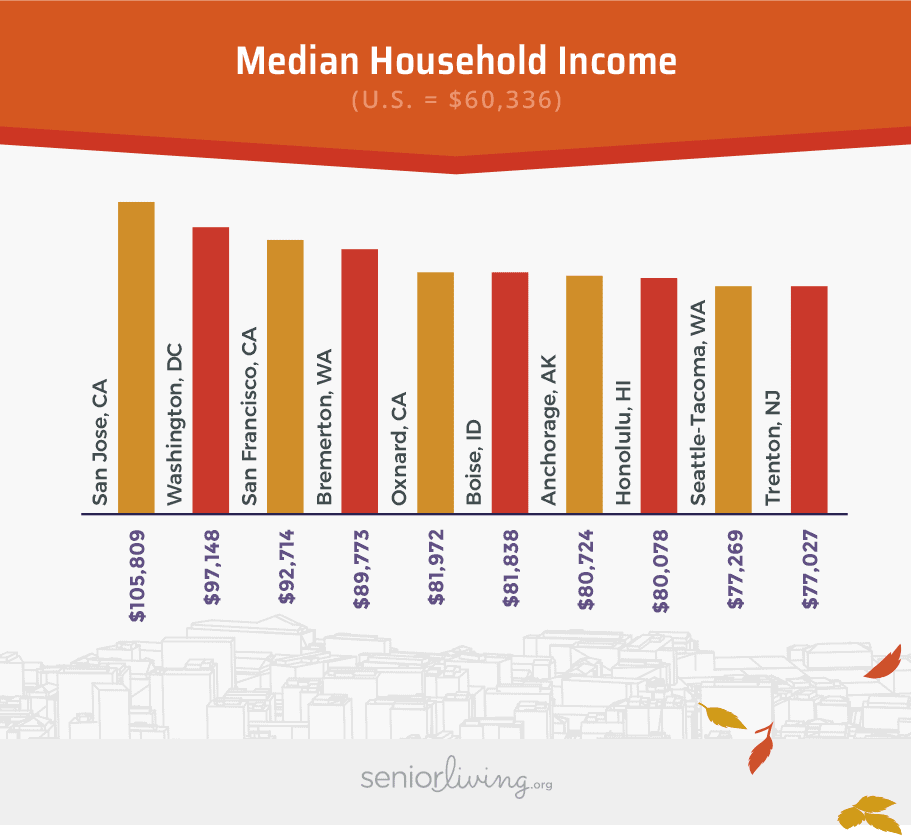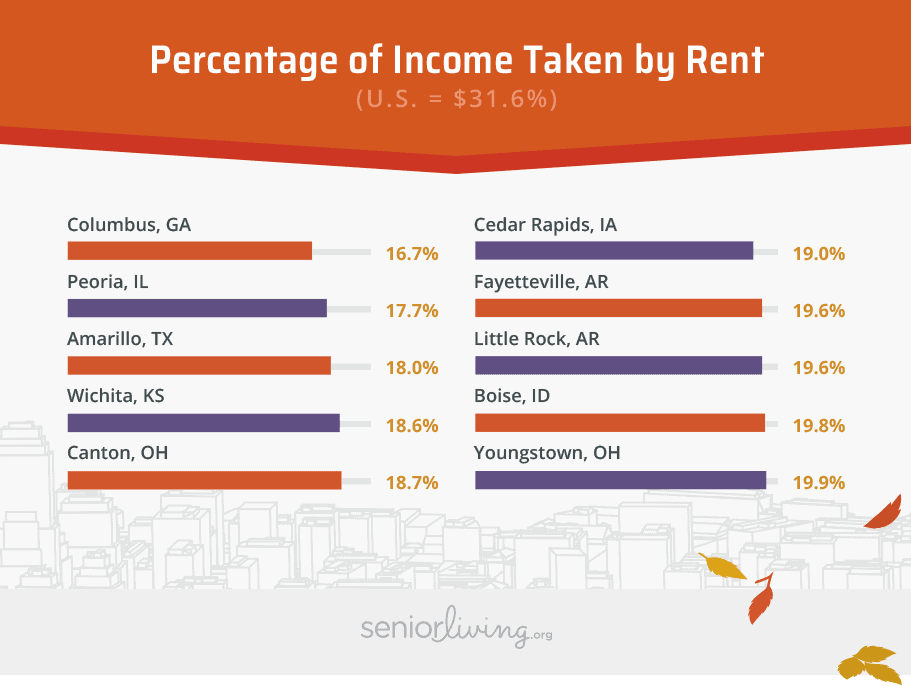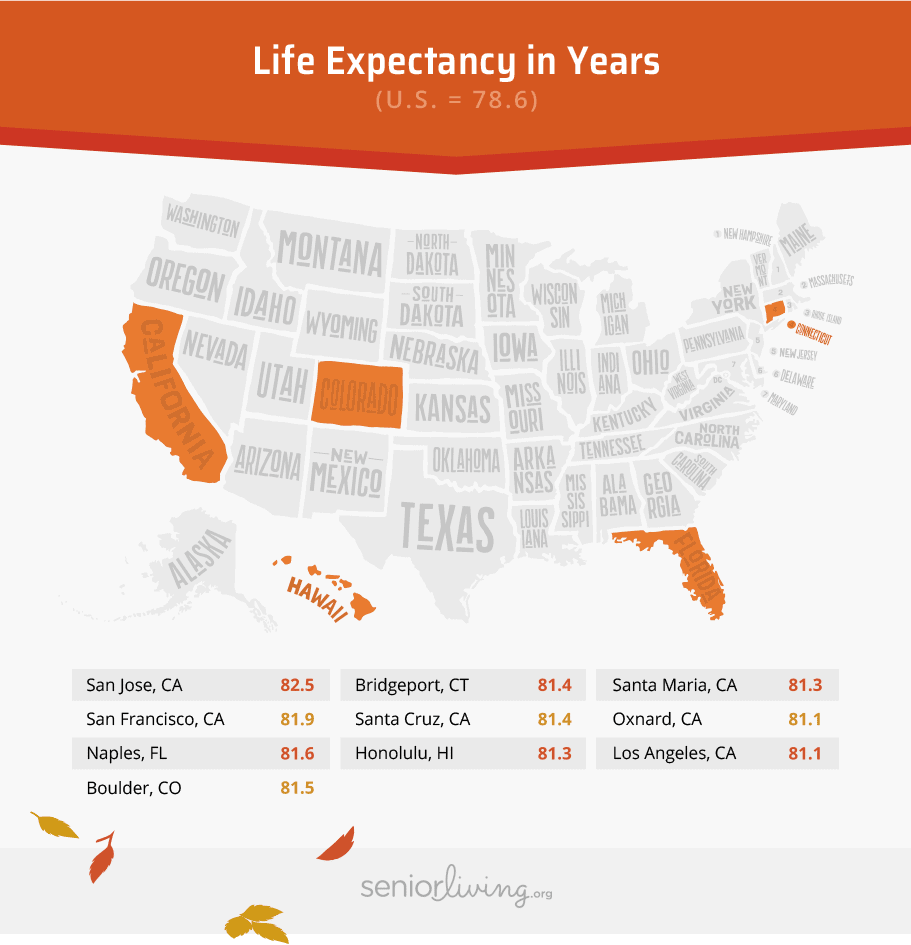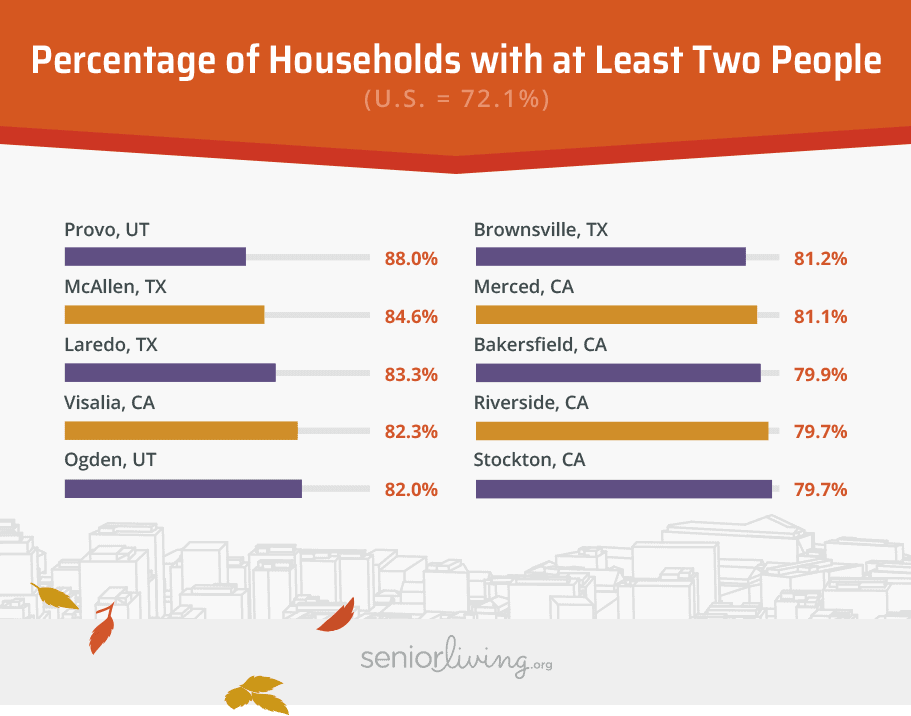20 Happiest U.S. Cities
Happiness is listed as an inalienable right in the U.S. Declaration of Independence despite being almost impossible to define. After all, what makes a person happy? Do the same things make every person happy? And is that what will always make a person happy for the rest of their life?
In other words, this feeling that we can't really define changes from person to person and even changes from year to year. But the pursuit of this state is a key part of the very founding of this country.
So how are we doing? Are Americans happy? Generally, according to recent survey data, the answer is a clear yes, but there are major reasons for concern. The General Social Survey, a long-running study on American happiness, found that about 85 percent of Americans say they are either pretty happy or very happy. While this represents a clear majority of Americans, this figure is down from a high of 91 percent in 1990.
Part of understanding whether you're happy is getting your arms around what makes you happy. Though this may vary from person to person, it generally involves a few common threads: relationships with other people, income (particularly disposable income), leisure time, and physical health.
We wanted to understand how different cities across the United States rate when it comes to residents' potential for happiness. So, we looked at hundreds of cities across an array of economic, health, social, and other metrics to see how much better (or worse) they have it than the average American.
What we found was that there were nearly two dozen cities that tend to have happiness metrics that are far better than what the average American experiences. From higher wages to longer lifespans to shorter commutes, we think the people in these cities should be among the very happiest Americans.
20 Happy Places
You can jump to the bottom of the page to see a full breakdown of our methodology, but in this study, we compared overall national rates to statistics in each city that covered the following:
- Income
- Housing affordability
- Life expectancy
- Commute length
- Suicide rate
- Crime rate
- Unemployment
- Household size
For each city, we calculated a percentage over or under the overall national rate for each category and then averaged each city's over/under percentage to calculate that city's overall average percentage. In this formula, lower numbers are better.
The average percentage for all 180+ cities was 99.4 percent, and exactly 20 cities had overall average percentages of at least 10 percentage points better than that. About half of the cities in our analysis had averages that were better than the overall average, but we wanted to focus on those that performed much better than the average city. In other words, the 20 happiest places in the United States.
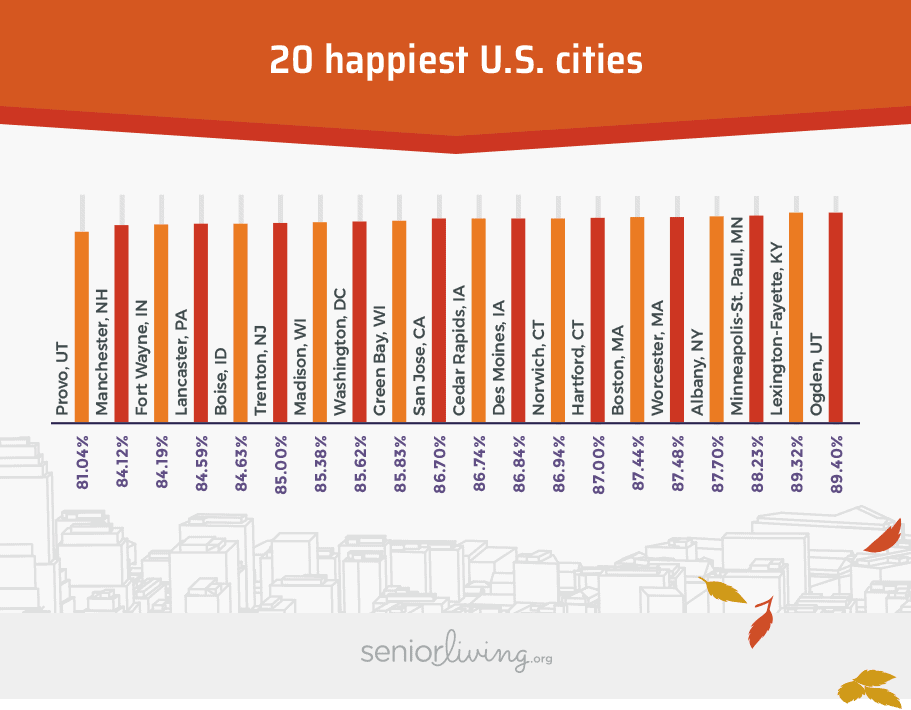
Here's a closer look at life in the top 20 happiest cities:
Income, Employment & Housing
Here's a look at the national leaders when it comes to financial matters:
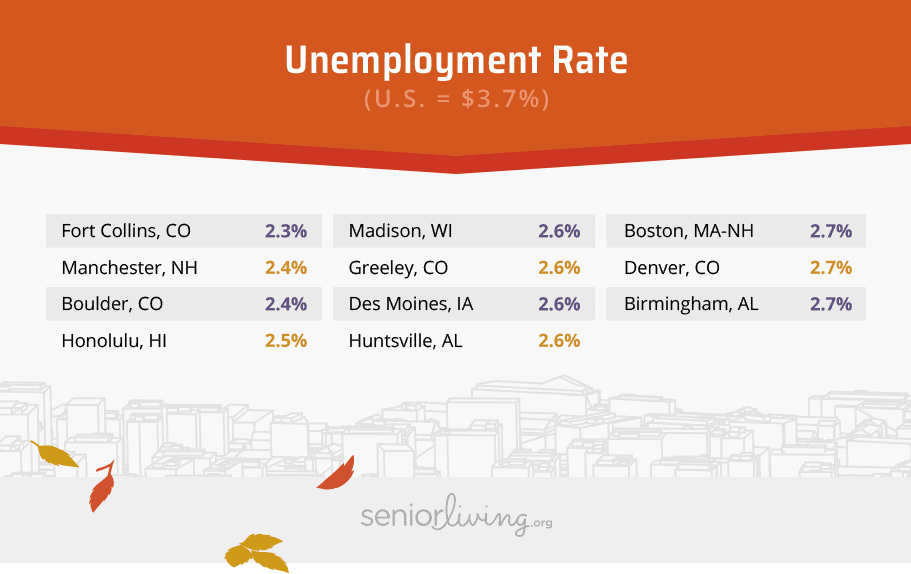
Health
Here are the cities that lead the way when it comes to health and wellness:
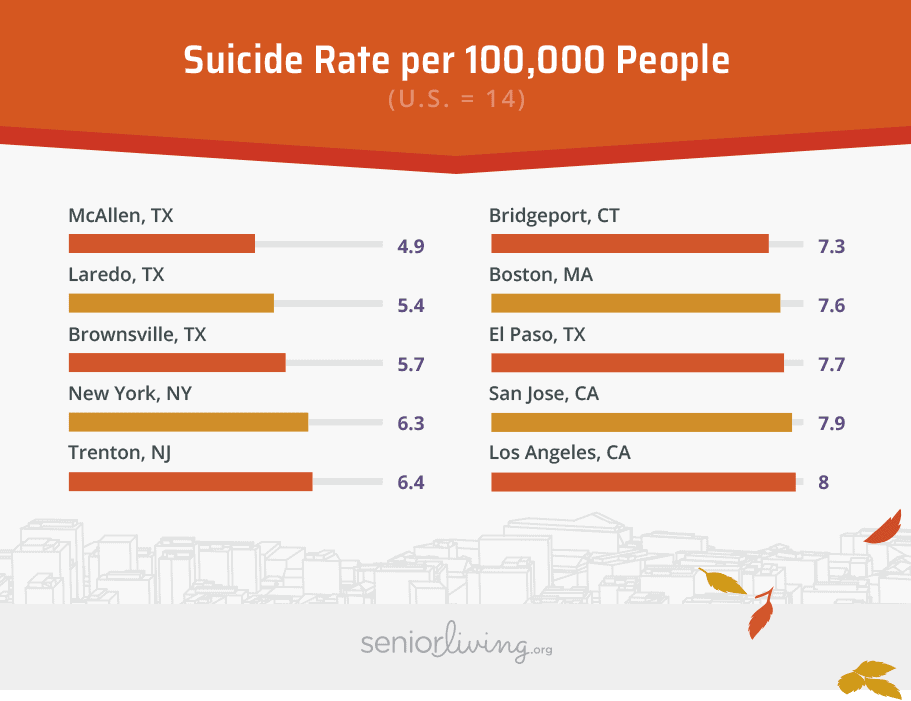
Other Areas
These cities are the best in the nation for crime rates, household size and commute times:
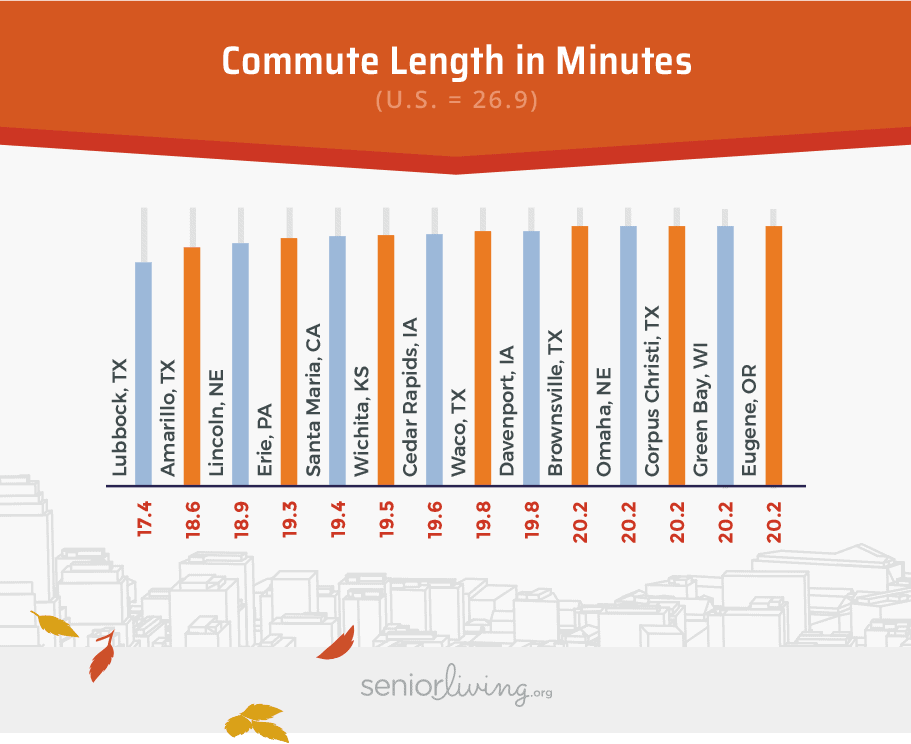
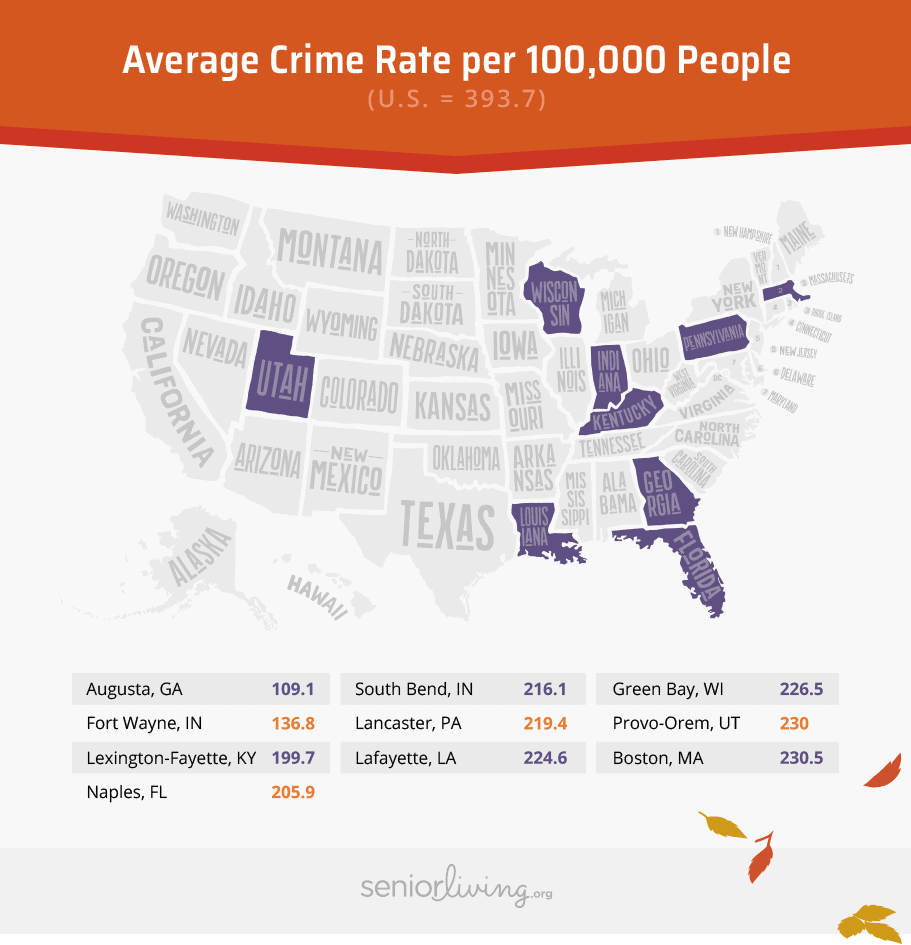
Conclusion
We think the data indicates that the cities we've mentioned present the best chance among all American cities for residents to be happy. But as we all know, happiness is far from a quantifiable concept for most people. Some of us need more money to be happy, while others need more free time to feel truly content. Others stake more of their happiness on their families. If it's true that life is what you make of it, living in one of our 20 happiest cities may help make your life a bit happier.
About This Report
We calculated which cities present the best chances for happiness by gathering data for nearly 1,000 cities across several categories, narrowing the list to about 185 that had consistently available information. We then compared the figures for each of those cities by national rates so that cities with lower percentages boast a better-than-U.S. average situation for each category. To calculate our ranking, we figured an average across all seven categories for each city.
For instance, Provo, Utah, which took the top spot in our ranking, had an overall average percentage of 81 percent, far below the all-city average of 99.4 percent. This means that, generally, people in Provo live longer, earn more, and are subject to crime less frequently, to name just a few of the categories, than the average American.
Here's a look at where we got the data for each category:
- Suicide rate
We created a custom query using the Centers for Disease Control and Prevention's online WONDER tool, which can be accessed here. The national suicide rate we used for comparison was published here.
- Median household income
This point came from the U.S. Census Bureau via a custom table that was created here. You can see the U.S. median household income at this page.
- Life expectancy
This information was calculated by taking the from-birth male/female average life expectancy published in a CDC dataset that can be found here. Notably, information for Maine and Wisconsin was not available. For cities in those states, the state-level life expectancy numbers were substituted. Overall U.S. life expectancy, according to the CDC, is 76.4 years.
- Crime
We used tables published by the FBI as part of its annual Crime in the U.S. series for cities and metro areas. We calculated average rates for all of the crimes for which data was available in each city. Several cities in North Carolina were lacking complete data, so a statewide average was substituted in those cases. National crime rates were published here.
- Unemployment rate
The percentage of eligible workers who were unemployed is updated monthly by the Bureau of Labor Statistics, a division of the U.S. Department of Labor. Data for the cities and metro areas can be found here and the national rate here.
- Commute length
The length in minutes of the average person's commute was based on information published by the U.S. Census Bureau for cities and the nation.
- Housing affordability
This metric is based on the amount of household income eaten up by the annualized average rent amount in each city, which we calculated using monthly rent data from Zillow.
- Household size
We used data from the U.S. Census Bureau on the percentage of households with more than one person. City-level data came from a custom Census table, and the national figure is here.
Fair Use Statement
The text and images included here are free to use for noncommercial reasons. If you want to share anything from this page, please provide a link back to this URL.


